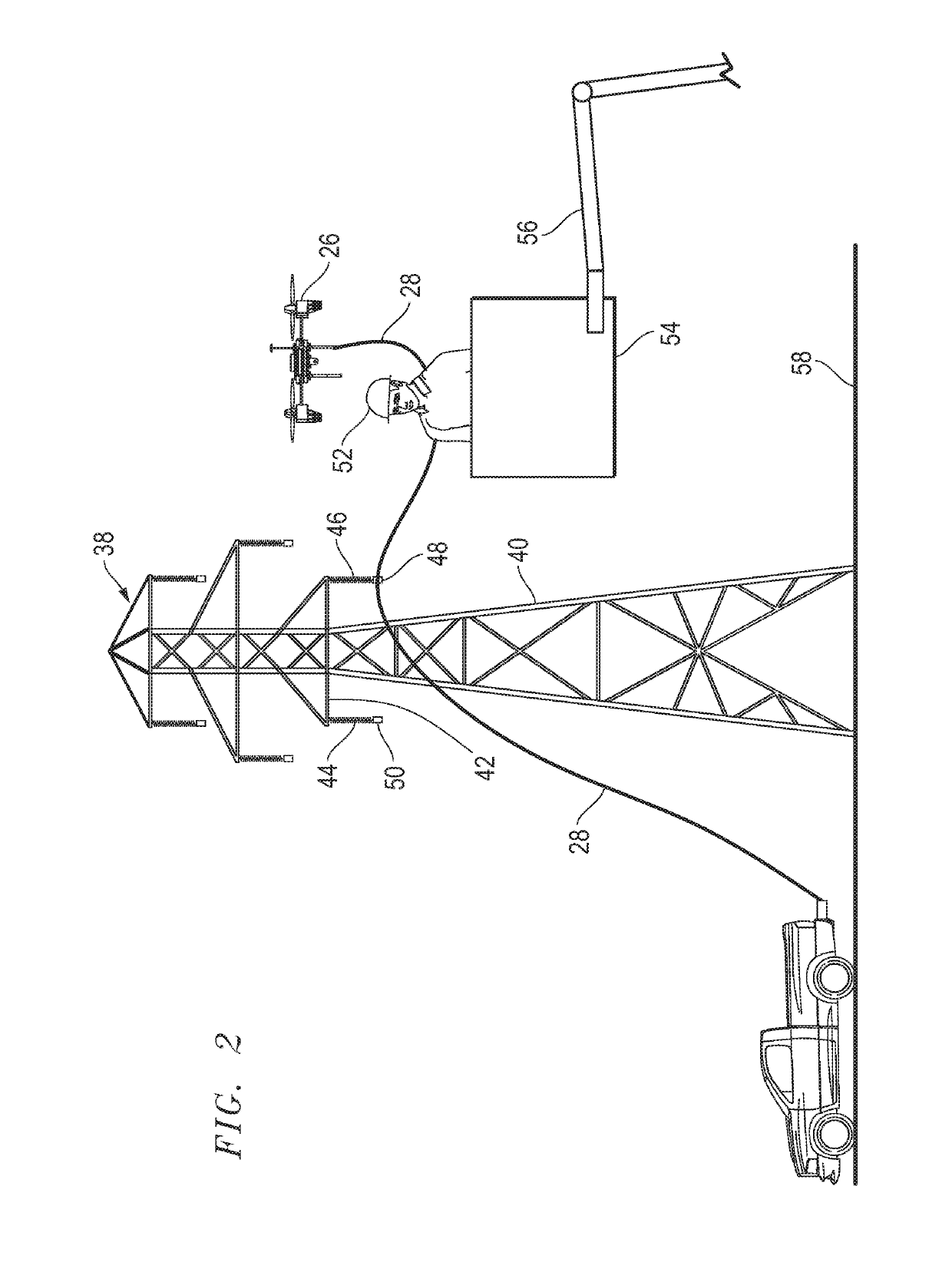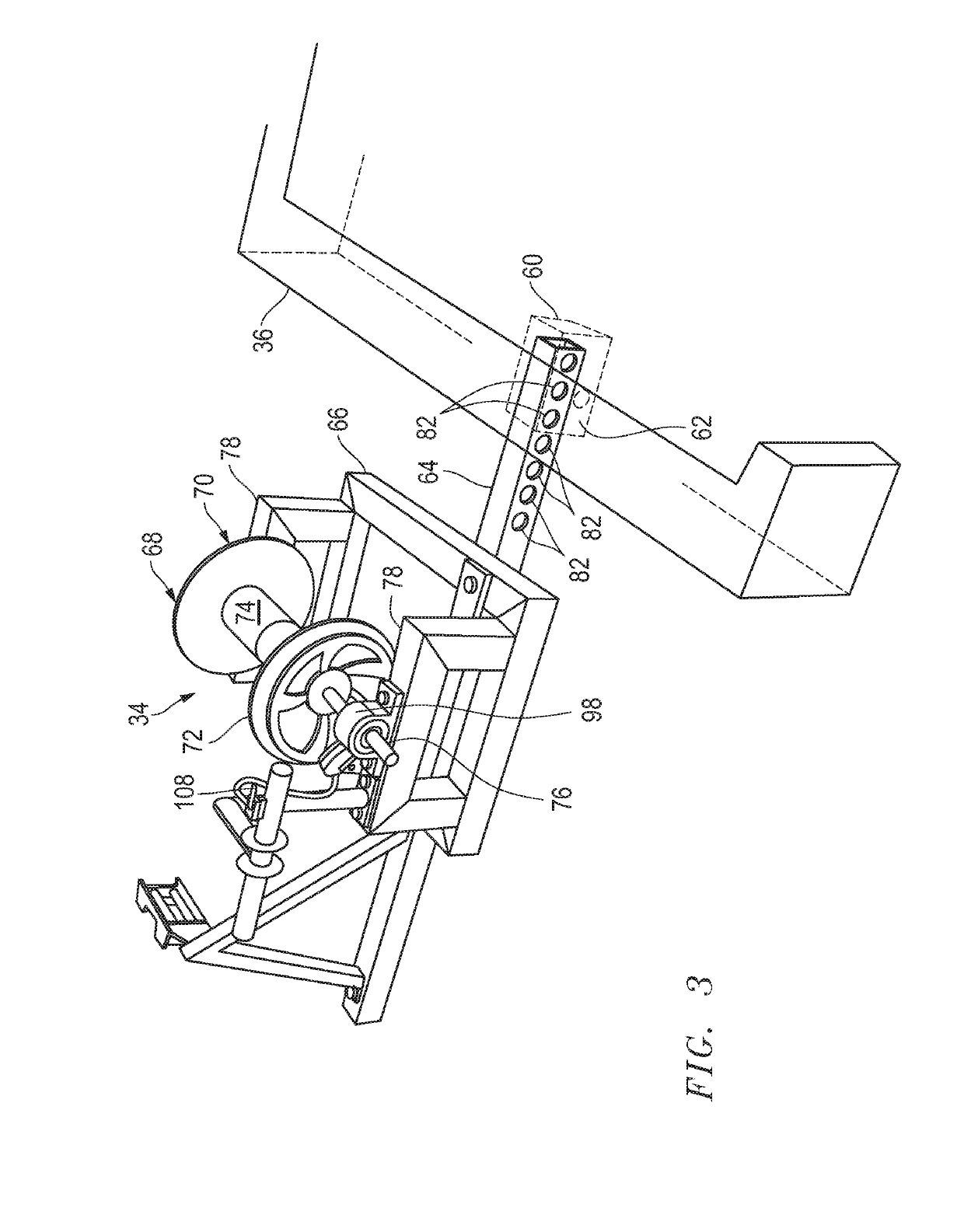Apparatus and method for placing and tensioning an aerial rope through a traveler of a power line
a technology of aerial rope and traveler, which is applied in the field of apparatus and a method of tensioning an aerial rope, can solve the problems of high cost of operator, local use permits, and high cost of helicopter equipment, so as to increase the braking force of the tensioning mechanism, the effect of quick connection and disconnecting
- Summary
- Abstract
- Description
- Claims
- Application Information
AI Technical Summary
Benefits of technology
Problems solved by technology
Method used
Image
Examples
Embodiment Construction
[0020]Turning now to a detailed description of the present teachings with reference to FIGS. 1-9, features and concepts also may be manifested in other arrangements and so the scope of the teachings is not limited to the embodiments described or depicted in FIGS. 1-9. The following examples of certain embodiments of the teachings are provided. Each example is provided by way of explanation of the teachings, one of many examples of the teachings, and the following examples should not be read to limit, or define, the scope of the teachings.
[0021]FIG. 1 depicts an example of an outdoor landscape 10 with geographical obstacles that must be considered when installing a new electrical conductor into or onto electrical power line towers, whether that conductor is part of new power line tower construction or a replacement conductor into an existing power line tower. For example, outdoor landscape 10 depicts a river 12 that flows in direction 14 through or within a valley 16. On each side of...
PUM
 Login to View More
Login to View More Abstract
Description
Claims
Application Information
 Login to View More
Login to View More - R&D
- Intellectual Property
- Life Sciences
- Materials
- Tech Scout
- Unparalleled Data Quality
- Higher Quality Content
- 60% Fewer Hallucinations
Browse by: Latest US Patents, China's latest patents, Technical Efficacy Thesaurus, Application Domain, Technology Topic, Popular Technical Reports.
© 2025 PatSnap. All rights reserved.Legal|Privacy policy|Modern Slavery Act Transparency Statement|Sitemap|About US| Contact US: help@patsnap.com



